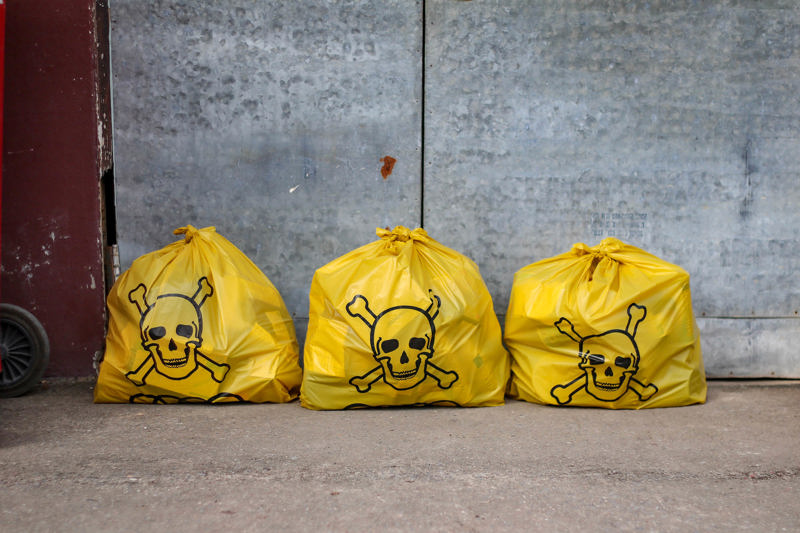Cytotoxic and cytostatic drugs
Safe handling of cytostatic and cytotoxic waste
 Any waste that is contaminated by cytotoxic and cytostatic medicines should be classed as cytotoxic and cytostatic waste.
Any waste that is contaminated by cytotoxic and cytostatic medicines should be classed as cytotoxic and cytostatic waste.
Cytotoxic and cytostatic waste includes medicines in tablet, liquid, cream or aerosol form.
Cytotoxic and cytostatic medicines are medicines that are either: toxic, carcinogenic, mutagenic or toxic for reproduction. They include:
- most hormonal preparations
- some anti-viral drugs
- amanyantineoplastic agents
- immunosuppressants
- some antibiotics.
Waste that could be contaminated by these medicines include:
- sharps, e.g. needles, syringes, scalpels, blades and sharp instruments
- used glass bottles and vials
- personal protective equipment, eg gloves, masks and gowns
- syringe bodies and tubing.
What you must do
You must ensure that your waste is stored, handled, recycled or disposed of safely and legally. You must comply with your waste responsibilities, known as your duty of care.
Duty of Care: Your waste responsibilities
Sewage containing cytotoxic and cytostatic waste
If you pollute the water environment, you are probably committing an offence.
You must not discharge waste medicines to foul sewer. However, urine and faeces from medicated patients may contain excreted cytotoxic and cytostatic medicines. This may vary with the individual drug.
You should consider which drugs are likely to be excreted in this manner and assess whether it is appropriate to dispose of this material to foul sewer.
You should ensure that your water company or water authority is aware of this issue before discharging any sewage containing cytotoxic or cytostatic waste.
If you discharge to a private sewage works you should consult your environmental regulator.
Hazardous/special waste
Cytotoxic and cytostatic waste is classified as hazardous/special waste. You must store, transport and dispose of this waste as hazardous/special waste to make sure you do not cause a risk to human health or the environment. You are committing an offence if you do not follow the regulations for dealing with hazardous/special waste.
You must not mix hazardous/special waste with your other waste or with other types of hazardous/special waste. Segregate your waste so that different wastes types do not get contaminated.
You must complete consignment notes for any hazardous/special waste that leaves your site. You must keep a register containing all of the consignment notes and the consignee returns. You must keep these records for three years.
How to complete the waste paperwork - classifying and describing cytotoxic and cytostatic waste
You will need to classify the waste in the consignment note as follows:
Use the European waste catalogue codes 18 01 03* and 18 01 08* Example description: Clinical waste - cytotoxic and cytostatic waste, for incineration only.
If sharps are included or if medicines are present in aerosol form you should mention them in the description.
Do not enter non-hazardous waste codes on consignment notes. Describe and code each hazardous/special waste present on the consignment note.
Good practice
Containers for cytotoxic and cytostatic waste
Your containers should be clearly labelled by the manufacturer to identify that they are suitable for and contain cytotoxic and cytostatic waste.
You should contain and dispose of cytotoxic and cytostatic waste in yellow clinical waste sharps containers with purple lids.
Further information
GOV.UK: Safe management of healthcare waste (UK-wide)
SEE ALSO: Healthcare guidance
